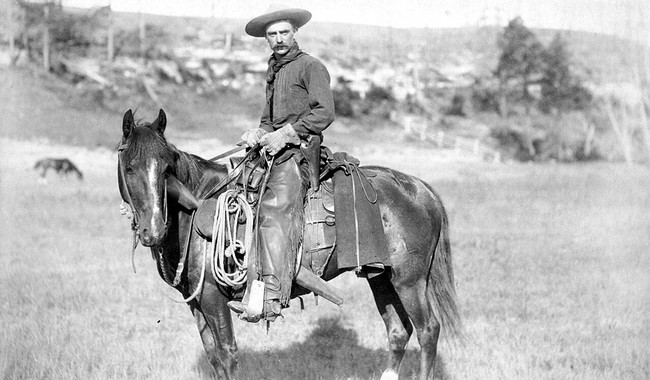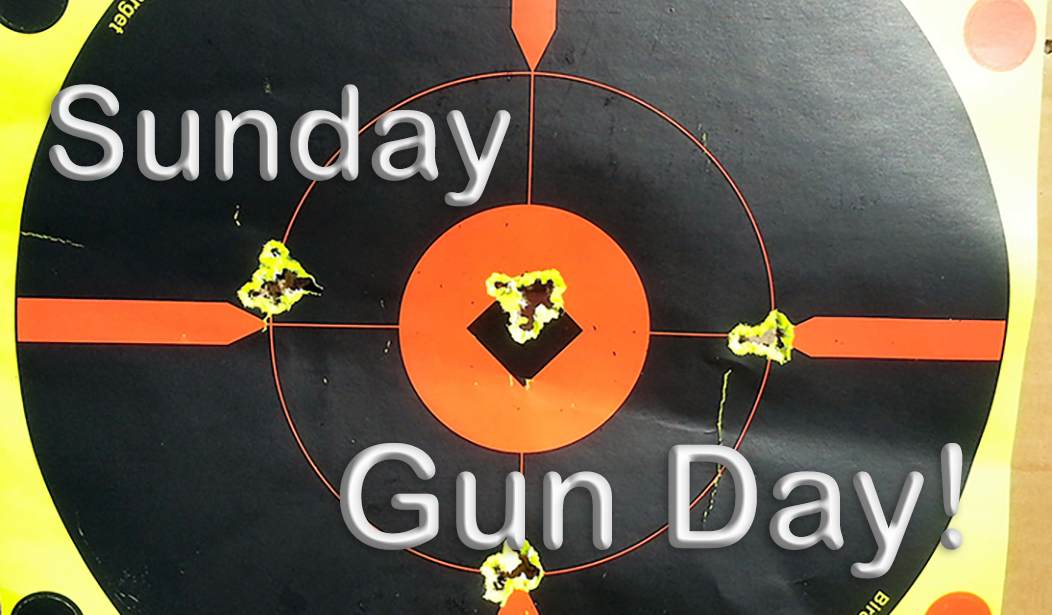Gun Leather
Let’s talk about gunbelts and holsters for outdoor work. No concealed-carry stuff here – let’s discuss rigs for carrying a heavy, powerful belt gun for serious work. It's important, in such things, to go for quality, and fortunately, quality is easy to come by; the market is replete with good gun leather. No matter what style of holster and rig you choose, it should be sturdy, solid, and, most of all, comfortable. If it's not comfortable, after all, you won't carry it, which means you may not have your favored sidearm at hand when some big, toothy critter boils out of the brush with the intent to gnaw on parts of your anatomy.
But before we do that, let’s talk about guns and loads.
Woods-Bumming Guns
While I favor my Glock 36 for everyday concealed carry, for outdoor work I like a big-bore wheelgun. When woods-bumming, I usually have either my S&W 25-5 or my Ruger Vaquero, both in .45 Colt. If I take it in my head to carry a semi-auto, it’s either the 1911 or the Glock 21, both (obviously) .45 ACPs. In the revolvers, I like 8 grains of Unique behind a Lasercast 250-grain hard-cast flat point. That load will blow through a railroad tie and knock a big handful of splinters out the far side and will easily lengthwise a big mulie or a cow elk.
For the .45 ACP, I like the 200-grain Lasercast semi-wadcutter. Like most Glocks, my 21 will feed almost anything; the 1911 is a little fussier but will feed SWCs fine with a good magazine. I use Kimber magazines, and the 1911 will feed empty cases with those.
Now, your mileage may vary; almost all my woods-bumming these days is done in either our home state of Alaska or, at times, in the Rockies in Colorado and Wyoming. In both locations, there are several big, thick-skinned, toothy critters, so I recommend a major-caliber handgun. But if you’re outdoors in areas where the most likely targets for your sidearm are coyote-sized, anything from a .32 Long to a .38 Special will work as well, along with being a little easier to shoot. The Ruger Single-Six may still be had in .32 H&R Magnum, a fine revolver in a good round for medium-sized varmints and, with a mild load topped with a hard-cast lead pill, nice for whatever edible small game presents itself.
That is, as long as Washington intends to go on allowing the peasantry to carry sidearms; but that's a discussion for another day.
See Related: Federal Judge Issues Preliminary Injunction Against Biden Gun Rule
Senator Chris Murphy: Wrong on Bump Stocks, Wrong on Guns, Wrong on 2nd Amendment, Wrong for America
But let’s move on to what I really wanted to talk about, and that’s how to tote your belt iron. A good rig, like a good sidearm, should be carefully chosen and, if properly cared for, should last a lifetime.
Gun Belt Rigs
The gun belt and holster should be comfortable and solid. The choice of material is up to the shooter; some like nylon web belts and holsters, and there is certainly nothing wrong with such a rig; I’ve used many myself. But it’s hard to beat good leather. Heavy harness leather should be used in the belt, and good stout bull hide in the holster. A heavy leather rig will start out very stiff, but wear and the application of a softening oil, like neat’s-foot oil, will soon make the rig softer and more wearable.

For my belt guns, I like a traditional, Western drop belt with an equally traditional hammer-loop holster, which rig hangs the butt of the gun at about wrist height when your arms are hanging naturally. This is my standard rig for the big Smith & Wesson mentioned earlier.
Back in the day, when I had a makeshift drop belt and an old Mexican loop holster for an old .36 Navy Colt replica I often toted around, I did a lot of practice reflex shooting and found that a drop belt worked well here. I find this style near perfect for being able to get the gun into action quickly; if you use the leg tie down to hold the holster in place, you can wipe off the holster’s hammer loop with the shooting hand’s thumb just as your fingers wrap around the grip. Train yourself to keep your finger off the trigger while drawing; cock the single-action or start the double-action pull after you have cleared leather and are already pushing the muzzle of the piece toward the target. Most good drop belts also come in a two-gun version if dual six-guns are your thing, and a cross-draw holster is available for most one-gun versions as well.
Personally, I don’t much see the point in carrying two revolvers; if you’re that concerned about running into some kind of trouble, best to pack along a rifle.
Lots of folks like the Threepersons style holster (see the old cowpoke above) as well, and the same statements apply. For that matter, there is nothing wrong with a simple leather cartridge belt outfitted with the classic Mexican loop holster, like the one I tend to tote my Vaquero around in.
Trouser Belt Holsters
There are options for folks who aren’t into dedicated gunbelts as well. When talking belt holsters, I’m tempted to just mention Bianchi and let it go at that, but there are plenty of good holsters out there, ranging from vinyl to high-end leather, prices from $25 or so to, well, as high as you care to go. Find a holster that holds the piece canted at the right angle for your natural grip and your gun hand and carry it in a position that’s comfortable for your build; I tend to favor a right-hand hip carry. I’ve used a cross-draw belt holster a time or two but don’t much care for them, as I find it awkward to reach across with my shooting hand. Your mileage may vary; as noted above, continue your draw-dry fire practice until you find the holster position that allows you to bring your piece into action quickly with a minimum of extraneous movement.
Bad Weather
If your stomping grounds tend to be wet and snowy/rainy, like the Pacific Northwest or Alaska, there are a variety of leather and synthetic flap holsters, which keep the weather off the gun but make it take longer to bring the piece to bear. Bianchi makes a mil-spec flap holster for various automatics if more modern hardware is your thing.
Whichever rig you choose, keep it clean and softened (saddle soap and water for leather rigs, good cleaning with clear water and soap for synthetics) and it will give many, many years of solid service. A well-made firearm can last for a couple of generations if it’s well cared for; there’s no reason the carry rig shouldn’t last as long.
Any preferences, suggestions, or additions? The comments are yours!













